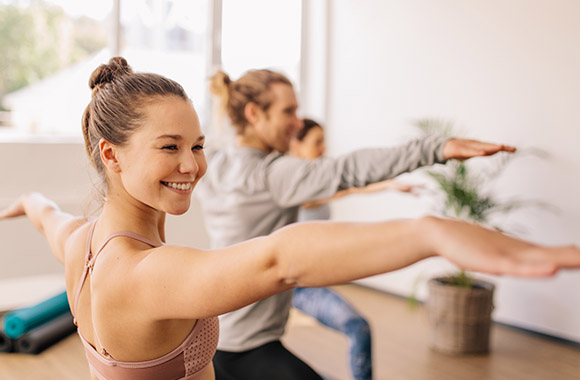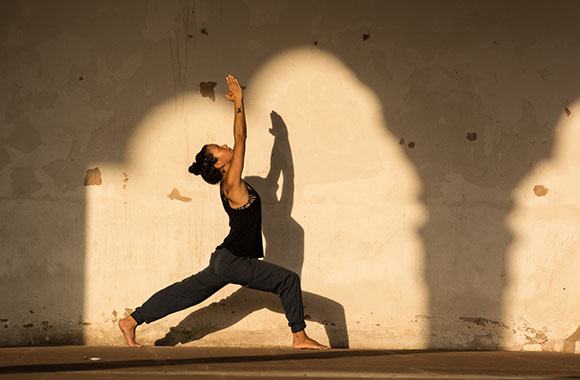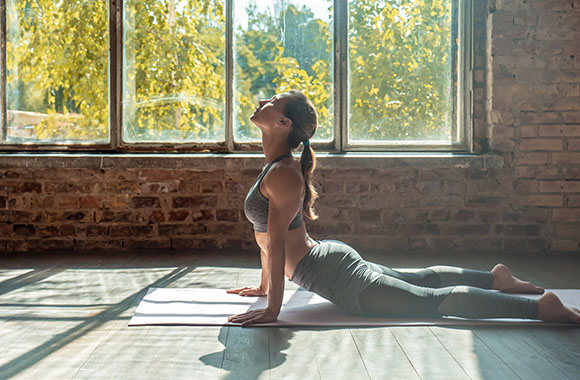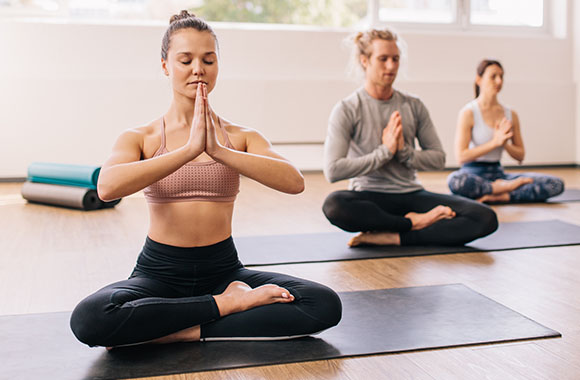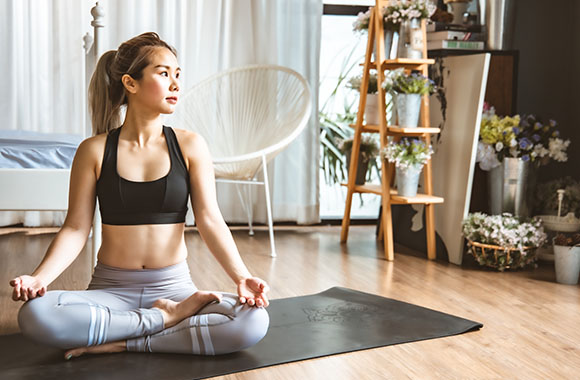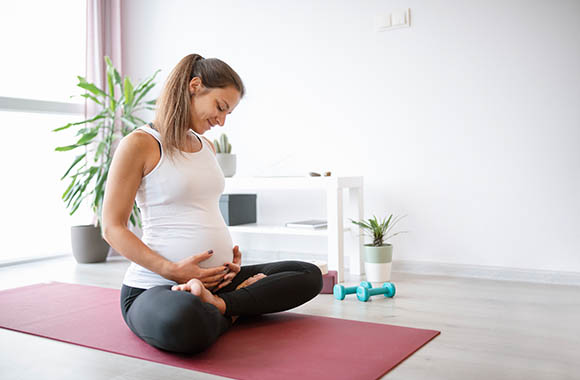Yoga fitness: From Aerial Yoga to Vinyasa & Ashtanga Yoga
Together with Pilates, yoga is part of the standard programme at many fitness studios. Here you will find the dynamic, i.e. powerful and physically demanding yoga styles that help you stay fit. Aerial Yoga, Ashtanga Yoga and Vinyasa Yoga allow you to test your limits and get to know your body. These types of yoga include less meditation and more flowing movements and precisely executed exercises that increase circulation. Below we introduce you to powerful and dynamic styles of yoga that you can try if you want to use yoga for physical fitness.
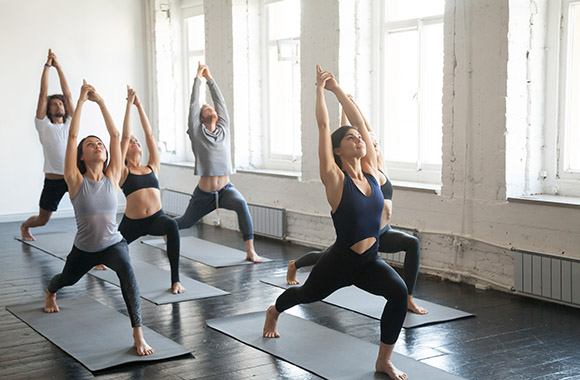
Table of contents
What is Vinyasa Yoga? Power yoga with variety
Vinyasa Yoga (also called power yoga) is known for its flowing, fast-paced sequences of exercises. In the rhythm of your breathing, you perform different asanas that flow seamlessly into each other. This makes Vinyasa Yoga one of the faster and more dynamic types of yoga. Due to the variety of different exercises, Vinyasa Yoga allows you to create your own mix of different asanas. In addition, a relaxed atmosphere awaits you in a Power Yoga class and depending on the mood or class, you can also accompany your yoga flow with some music.
Vinyasa Yoga focuses on your body and pays special attention to your breathing. It is known for its flowing movements and intense stretches. Today it is quite popular with young people who want to improve their body and mental health at the same time, without having to go back to the philosophical and spiritual practices of classical yoga.
Level of difficulty: adaptable to any fitness level.
Suitable for: Those interested in yoga with a good basic level of fitness.
What is Ashtanga Yoga? Traditional yoga for physical and mental strength
Alongside classical Hatha Yoga, Ashtanga is one of the best-known types of yoga. In terms of speed and dynamics, Ashtanga Yoga is like Vinyasa Yoga. However, it differs from other types of yoga in its strict sequence of asanas, which each student completes at his or her own pace.
The sequence of Ashtanga Yoga is defined as follows: The teacher shows his students a flow. They then practice the flow in constant repetition in their breathing rhythm. The yoga teacher goes from student to student and helps them individually. The asanas are always held for exactly five breaths before switching to the next asana in a smooth movement.
Due to this fast rhythm and the demanding exercises, the heart works hard, and the body quickly reaches its limits.
The best-known flow is the sun salutation from the first series of traditional Ashtanga Yoga by Pattabhi.
The best-known flow is the sun salutation from the first series of traditional Ashtanga Yoga by Pattabhi.
Ashtanga Yoga has no meditative or spiritual elements – it’s purely physical. However, your thoughts and emotions are utilised in this style of yoga because the precise exercises require you to concentrate fully on yourself and your body. Many competitive athletes practise Ashtanga Yoga to train not only their body but also their mind under stress and to learn the right breathing techniques for peak performance.
Level of difficulty: demanding to difficult
Suitable for: experienced yogis
If you are new to yoga or less fit, you should avoid starting with Ashtanga Yoga. The exercises and stretches in quick succession will push you to your limit and could cause an injury. An alternative for beginners is Vinyasa Yoga or Power Yoga, as the exercises can be better adapted to your fitness level.
If you are new to yoga or less fit, you should avoid starting with Ashtanga Yoga. The exercises and stretches in quick succession will push you to your limit and could cause an injury. An alternative for beginners is Vinyasa Yoga or Power Yoga, as the exercises can be better adapted to your fitness level.
Bikram Yoga & Jivamukti Yoga: Yoga styles of a special kind
The yoga styles mentioned so far are widespread and are offered in various yoga schools and fitness studios. However, dynamic yoga also includes Bikram and Jivamukti. These two styles are very specialised and are only offered at special schools.
Bikram Yoga or hot yoga is based on classical Hatha Yoga but is practised in a mirrored studio that is heated to 40 °C. It promotes circulation and cleanses the body of toxins through sweating. The 26 exercises were developed by the Indian yoga master Bikram Choudhury. Bikram yoga is one of the most demanding types of yoga and really makes you sweat. It is important to drink enough before and after the yoga practice.
Level of difficulty: difficult
Suitable for: Experienced yogis with a strong cardiovascular system.
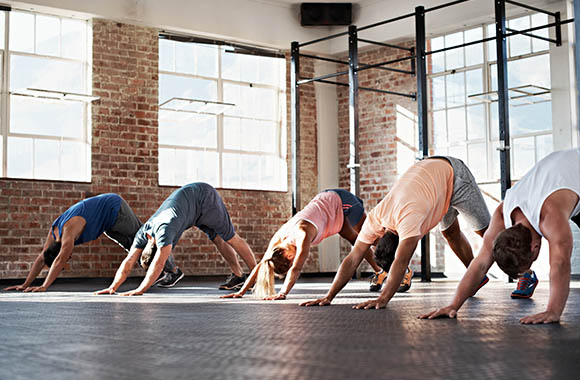
Jivamukti Yoga was developed in the 1980s by American artists Sharon Gannon and David Life. The exercises are very similar to Vinyasa Yoga in both flow and dynamics. The asanas are joined by chanting, meditation, and music. Often, changing spiritual themes are used as the basis of the course structure and philosophies are also discussed. It is like Kundalini Yoga but the practice sequences in Kundalini Yoga are a bit more relaxed. Jivamukti Yoga is perfect for all those who want s physical workout and still experience the spiritual side of yoga and the classical teachings.
Level of difficulty: adaptable to any fitness level.
Suitable for: Beginners and experienced yogis with a basic level of fitness who also have an interest in traditional yoga.
Yogilates: Yoga and Pilates combined
As the name suggests, Yogilates combines classical Hatha Yoga with Pilates. With Yogilates, you train your fitness through the brisk sequence of exercises, while the stretching and muscle exercises from Pilates strengthen your entire body. It is a systematic whole-body workout that strengthens the pelvic floor, abdomen, and back muscles. Exercises at the beginning and end of the class also relax your mind and body.
Yogilates offers a comprehensive mental and physical balance to stressful everyday life. Especially if you spend a lot of time sitting at your desk in the office, you will strengthen your posture and free your mind for new tasks.
Level of difficulty: adaptable to any fitness level
Suitable for: Beginners and advanced practitioners who want to strengthen their back and core.
Aerial Yoga: Fun factor in a sling
Aerial Yoga is a completely new type of yoga that has come to us from the USA. With the help of a large sling, you float above the ground and perform the asanas in the air. This is great fun and a welcome change for all die-hard yogis. It is also a good way to relieve your back and strengthens the whole body at the same time. In addition, Aerial Yoga improves your balance and allows you to get to know your body in a whole new way.
Aerial Yoga is suitable for beginners as well as for advanced yogis. You must have good core muscles and basic fitness so that you can hold the asanas well in the sling.
Level of difficulty: demanding
Suitable for: Interested people with good basic fitness and no fear of heights.
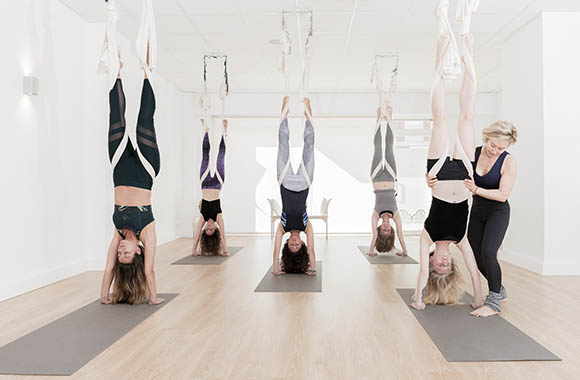
Whether it’s Ashtanga Yoga or Aerial Yoga, with all types of yoga it’s a good idea to wear good, comfortable sportswear and they will allow you to move freely and enjoy your session.
Whether it’s Ashtanga Yoga or Aerial Yoga, with all types of yoga it’s a good idea to wear good, comfortable sportswear and they will allow you to move freely and enjoy your session.
Conclusion
Yoga is an excellent way to exercise and train all muscle groups effectively. Whether it is the sporting aspect that is most important to you, or perhaps you want to participate spiritually or maybe you are just looking for a thrill – there is guaranteed to be something for you in the dynamic types of yoga.
Image sources
iStock.com/AleksandarGeorgiev
iStock.com/fizkes
iStock.com/kupicoo
iStock.com/aluxum

